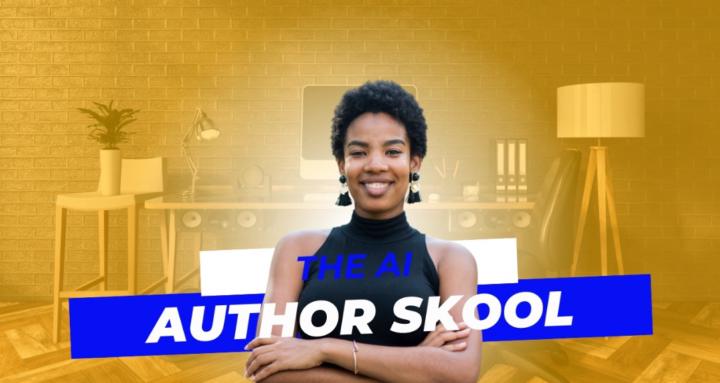Aug 8 • Writing & Editing Your Book
Chapter Structure & Storytelling: Ship Chapters That Actually Move People
Most chapters die for the same reason: No structure. No story. No point.
Great chapters do three things in order:
- Hook attention
- Deliver a clear lesson
- Drive a concrete next step
Do that 10–12 times and you don’t have a manuscript—you have momentum.
Below is the exact system I give authors to structure every chapter so it’s impossible to ramble.
Step 1 — Define the Chapter Promise (1 sentence)
Before you write a word, answer: “By the end of this chapter, the reader will be able to ______.”If you can’t answer in one sentence, you’ll drift.
AI prompt: “Summarize the promise of a chapter about [topic] in one clear sentence starting with ‘By the end, the reader will…’ Give me 5 options.”
Step 2 — Open With a Hook (30–120 words)
Your first paragraph must pull. Use one of these:
- Moment: drop into a scene (dialogue, tension, a decision)
- Myth: call out a common belief and flip it
- Metric: surprising stat that reframes the problem
- Mistake: confess the mistake you made (reader likely made it too)
AI prompt: “Write 3 opening hooks for a chapter about [topic]: one scene-driven, one myth-busting, one mistake I made.”
Step 3 — Tell a Clean Story (300–500 words)
Use the S-B-T-R spine:
- Situation: where you were, what was normal
- Break: the trigger, conflict, or failure
- Turn: the insight, tool, or help you found
- Result: what changed (quantify if possible)
Keep one protagonist (you or a client), one obstacle, one insight.
AI prompt:“Expand this outline into a first-person story using Situation → Break → Turn → Result. Keep it 400 words, conversational, specific.”
Step 4 — Deliver the Lesson (3 crisp points)
Teach like a coach, not a professor. Each point = claim → why → how in 3–5 sentences.
- Point 1: The misconception
- Point 2: The principle
- Point 3: The process (your framework)
AI prompt: “Turn this chapter promise and story into 3 teaching points. For each: write a claim, a one-sentence ‘why,’ and a 3-step ‘how.’”
Step 5 — Add a Mini Framework (make it ownable)
Name your method (short, sticky). Examples:
- MAP (Measure–Adjust–Publish)
- RIP (Research–Illustrate–Package)
- SAVE (Structure–Amplify–Voice–Edit)
Give 1–2 lines per step so readers can use it immediately.
AI prompt: “Name a 3–4 step framework for [outcome]. Give a short definition for each step and an example in plain language.”
Step 6 — Close With a Micro-Action (practical, 2–5 minutes)
Readers remember what they do, not what they read.
- 1 question to reflect
- 1 tiny behavior to try
- 1 metric to track
Examples:
- “Write one paragraph using S-B-T-R.”
- “Name your 3-step method. Post it in the community.”
- “Set a 10-minute timer and draft your hook.”
AI prompt:“Based on this chapter, propose 5 micro-actions a busy reader can complete in under 5 minutes.”
Step 7 — Bridge to the Next Chapter (1–2 lines)
End with momentum, not a mic drop. Tie the current lesson to what’s next:
“Now that your story has a spine, the next chapter turns it into a repeatable framework.”
AI prompt: “Write a one-sentence bridge from this chapter on [topic] to the next chapter on [next topic]. Keep it punchy.”
The 9-Block Chapter Template (copy/paste)
- Chapter Promise (1 sentence)
- Hook (scene / myth / mistake / stat)
- Story: Situation
- Story: Break
- Story: Turn
- Story: Result
- Lesson Point 1 (claim → why → how)
- Lesson Point 2 (claim → why → how)
- Lesson Point 3 + Framework (named)
- Micro-Action
- Bridge to Next Chapter
(Yes, that’s 11—consider 3–9 the “body.”)
Common Mistakes (and fixes)
- Vague promise → Write the “By the end…” line first.
- Story soup → One character, one conflict, one change.
- Lecture mode → Use claim → why → how. No monologues.
- No ownership → Name the framework. You’re building IP.
- Dead end → Always end with a micro-action + bridge.
AI prompt:“Diagnose this chapter draft for the five mistakes above. Suggest edits in bullet points.”
Mini Example (90 seconds)
Promise: By the end, you’ll outline any story with S-B-T-R.Hook: “I rewrote Chapter 3 fourteen times. The problem wasn’t my writing. It was my structure.”Story:
- Situation: writing nightly, stuck at 1,200 words
- Break: feedback—“nothing happens here”
- Turn: discovered S-B-T-R, rebuilt in 20 minutes
- Result: chapter shipped, beta readers finished in one sitting
- Lesson:
- Stories fail from missing “Break” → identify the moment of tension
- Readers need one Turn → spotlight the insight/tool
- Close with a measurable Result → proof builds trust
- Framework: S-B-T-R card with one line each
- Micro-Action: Draft your S-B-T-R for Chapter 2 in 5 minutes
- Bridge: Next: package your story into a 3-step method readers can repeat.
Ship It Today (30-minute sprint)
- Minute 0–3: Write your chapter promise
- 3–10: Draft the hook
- 10–18: S-B-T-R story pass
- 18–25: Three teaching points + tiny framework
- 25–28: Micro-action + bridge
- 28–30: Read aloud once. Cut fluff.
AI prompt (one-and-done):“Using this skeleton [paste the 9-block template], draft a chapter on [topic] for [audience] in a warm, direct voice. 1,200–1,500 words. Then propose a 5-minute micro-action and a bridge to a chapter on [next topic].”
1
2 comments
powered by

skool.com/ai-author-school-2331
Learn how to write a profitable book in 7 days using AI. For entrepreneurs ready to grow their brand, income, and impact—without writing it all.
Suggested communities
Powered by
